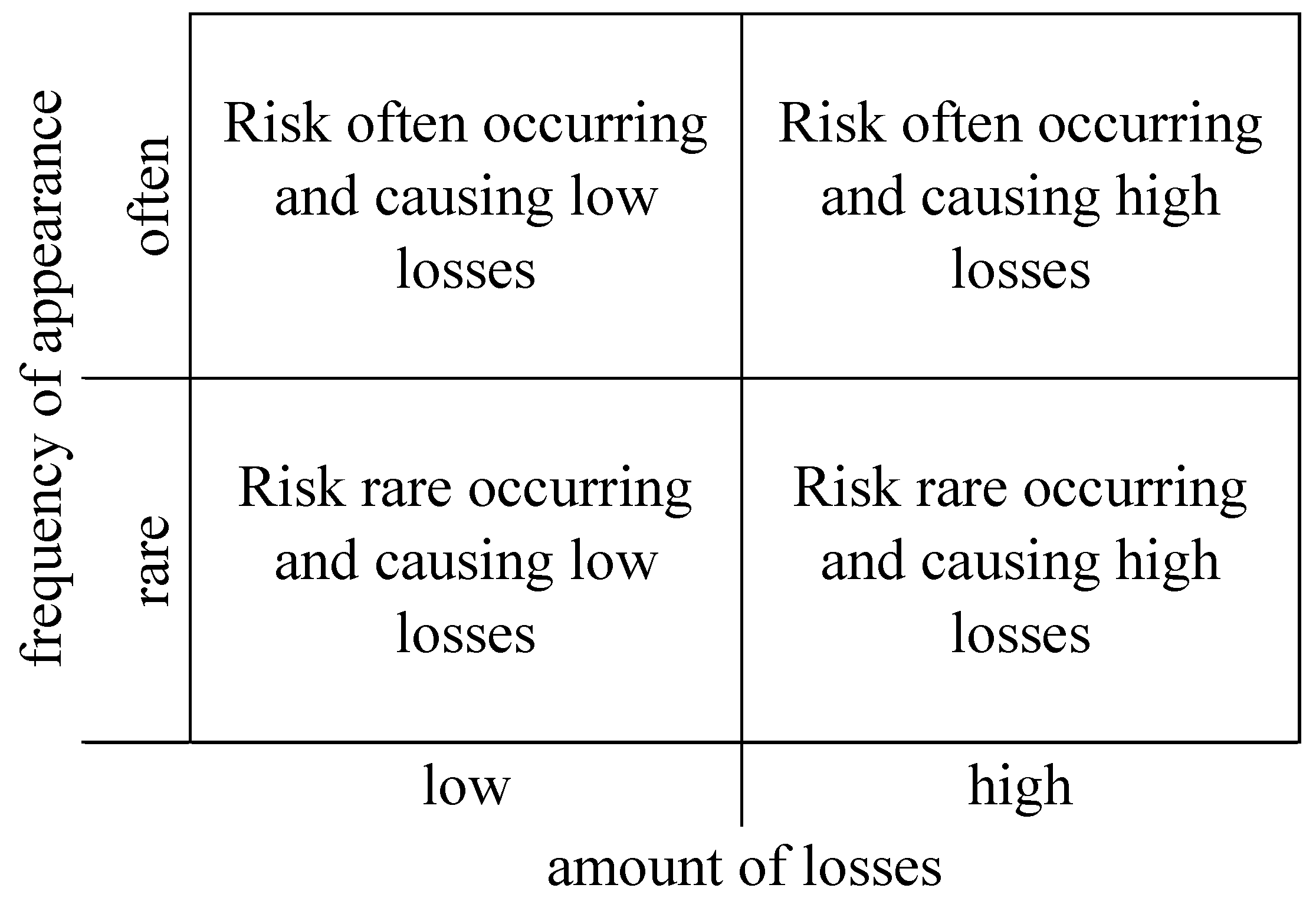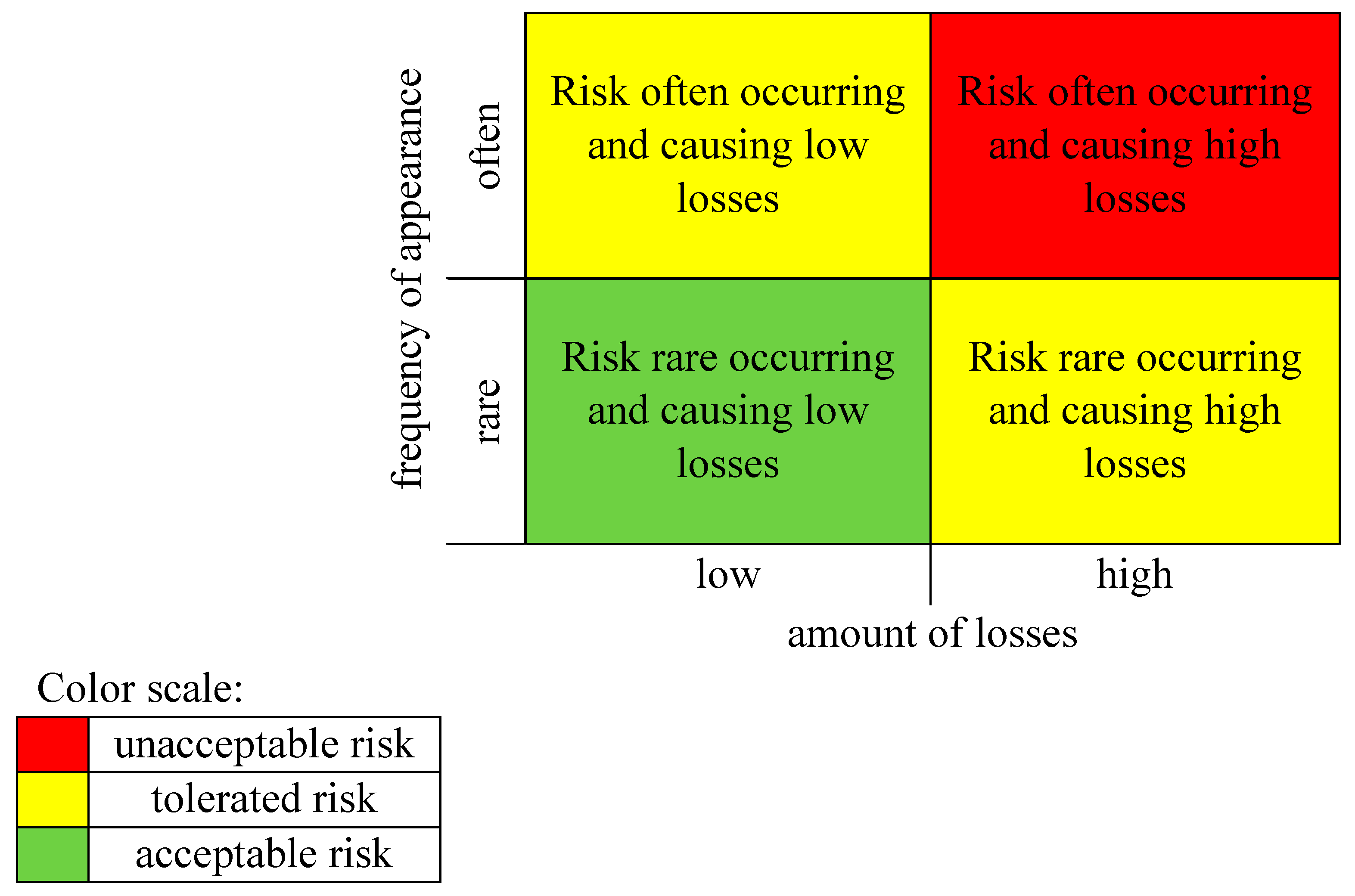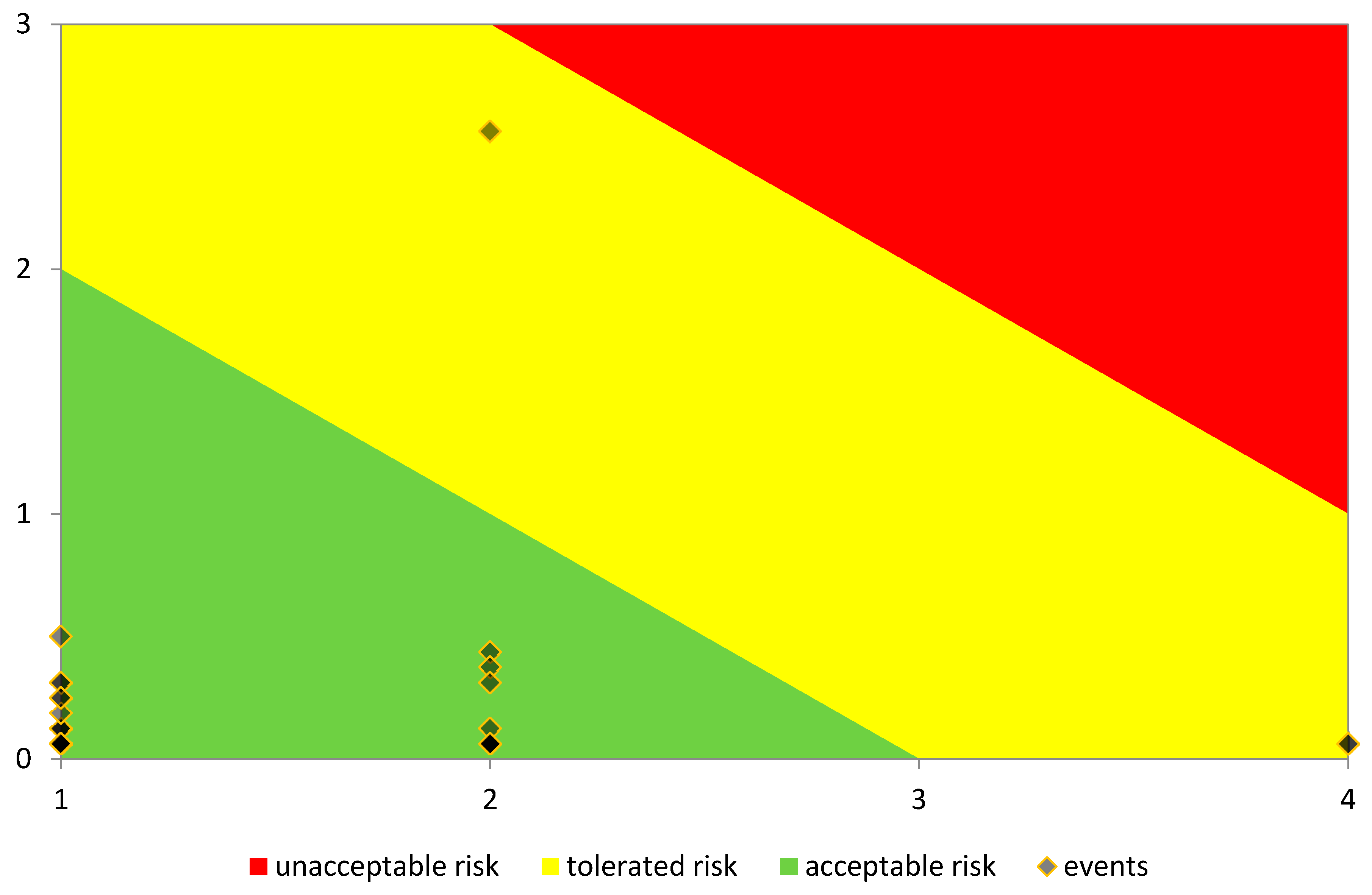Risk Assessment Analysis in a Municipal Wastewater Treatment Plant †
Abstract
:1. Introduction
2. Material and Methods
3. Results and Conclusions
Author Contributions
Acknowledgments
Conflicts of Interest
References
- Andraka, D.; Dzienis, L. Required reliability level of wastewater treatment plants according to European and Polish regulations. Zeszyty Naukowe Politechniki Białostockiej. Inżynieria Środowiska 2003, 16, 24–28. [Google Scholar]
- Żaba, T.; Krolikowski, A.; Królikowska, J. Failure frequency for a small water treatment plant. Inżynieria Ekologiczna 2011, 24, 215–225. [Google Scholar]
- Kulińska, E. Metods for risk analisys in logistics processes. Logistyka 2011, 2, 385–409. [Google Scholar]
- Iwanejko, R.; Rybicki, S. M. Risk management for sewage treatment plants. Part I: Does risk management for sewage treatment plants make sense? Gaz Woda i Technika Sanitarna 2008, 2, 10–13. [Google Scholar]
- Łój-Pilch, M.; Zakrzewska, A.; Zielewicz, E. Identification of threats that may pose a risk on municipal sewage treatment plant. Instal 2018, 4, 61–63. [Google Scholar]
- Zawarska, J. Identyfikacja i pomiar ryzyka w procesie zarządzania ryzykiem podmiotów gospodarczych. Zarządzanie i Finanse 2012, 1, 65–75. [Google Scholar]



| Occurring Events: | Frequency of Appearance | |
|---|---|---|
| (1/year) | (F) | |
| rarely | ≤2 | 1 |
| often | 2–4 | 2 |
| very often | ≥4 | 3 |
| Type of Risk | Amount of Losses (L) |
|---|---|
| Qualitative | 1 |
| Qualitative, operational | 2 |
| Qualitative, operational, financial | 3 |
| Qualitative, operational, ecological, financial | 4 |
Disclaimer/Publisher’s Note: The statements, opinions and data contained in all publications are solely those of the individual author(s) and contributor(s) and not of MDPI and/or the editor(s). MDPI and/or the editor(s) disclaim responsibility for any injury to people or property resulting from any ideas, methods, instructions or products referred to in the content. |
© 2019 by the authors. Licensee MDPI, Basel, Switzerland. This article is an open access article distributed under the terms and conditions of the Creative Commons Attribution (CC BY) license (https://creativecommons.org/licenses/by/4.0/).
Share and Cite
Łój-Pilch, M.; Zakrzewska, A.; Zielewicz, E. Risk Assessment Analysis in a Municipal Wastewater Treatment Plant. Proceedings 2019, 16, 18. https://doi.org/10.3390/proceedings2019016018
Łój-Pilch M, Zakrzewska A, Zielewicz E. Risk Assessment Analysis in a Municipal Wastewater Treatment Plant. Proceedings. 2019; 16(1):18. https://doi.org/10.3390/proceedings2019016018
Chicago/Turabian StyleŁój-Pilch, Magdalena, Anita Zakrzewska, and Ewa Zielewicz. 2019. "Risk Assessment Analysis in a Municipal Wastewater Treatment Plant" Proceedings 16, no. 1: 18. https://doi.org/10.3390/proceedings2019016018
APA StyleŁój-Pilch, M., Zakrzewska, A., & Zielewicz, E. (2019). Risk Assessment Analysis in a Municipal Wastewater Treatment Plant. Proceedings, 16(1), 18. https://doi.org/10.3390/proceedings2019016018





